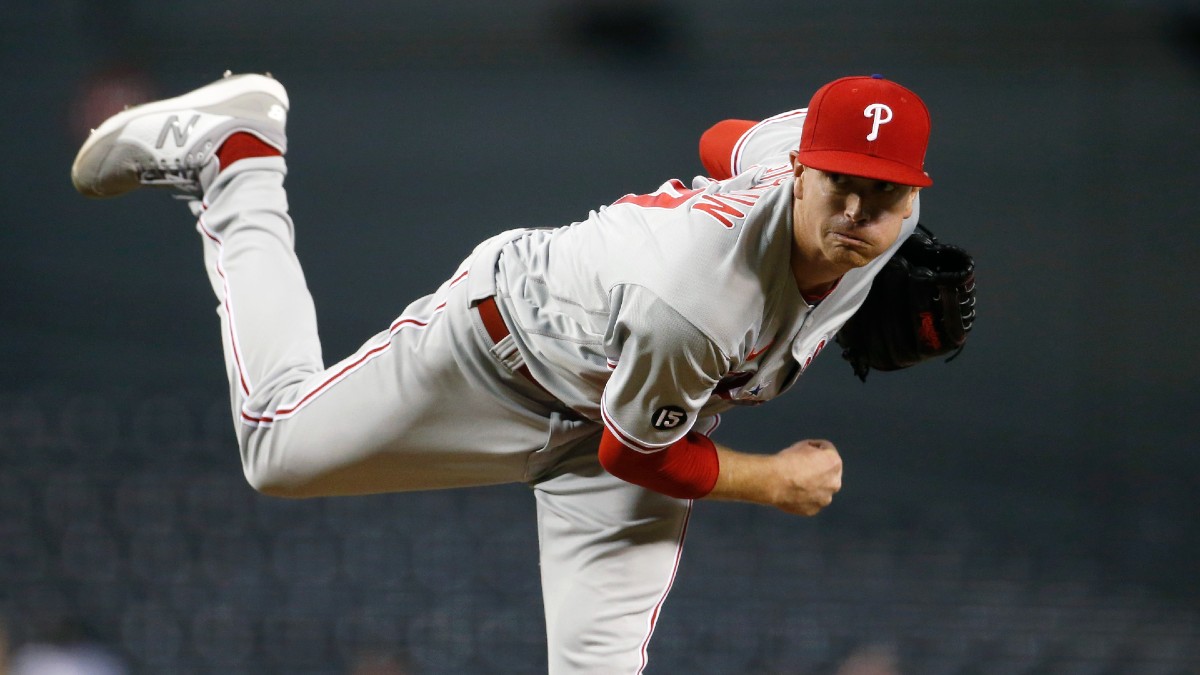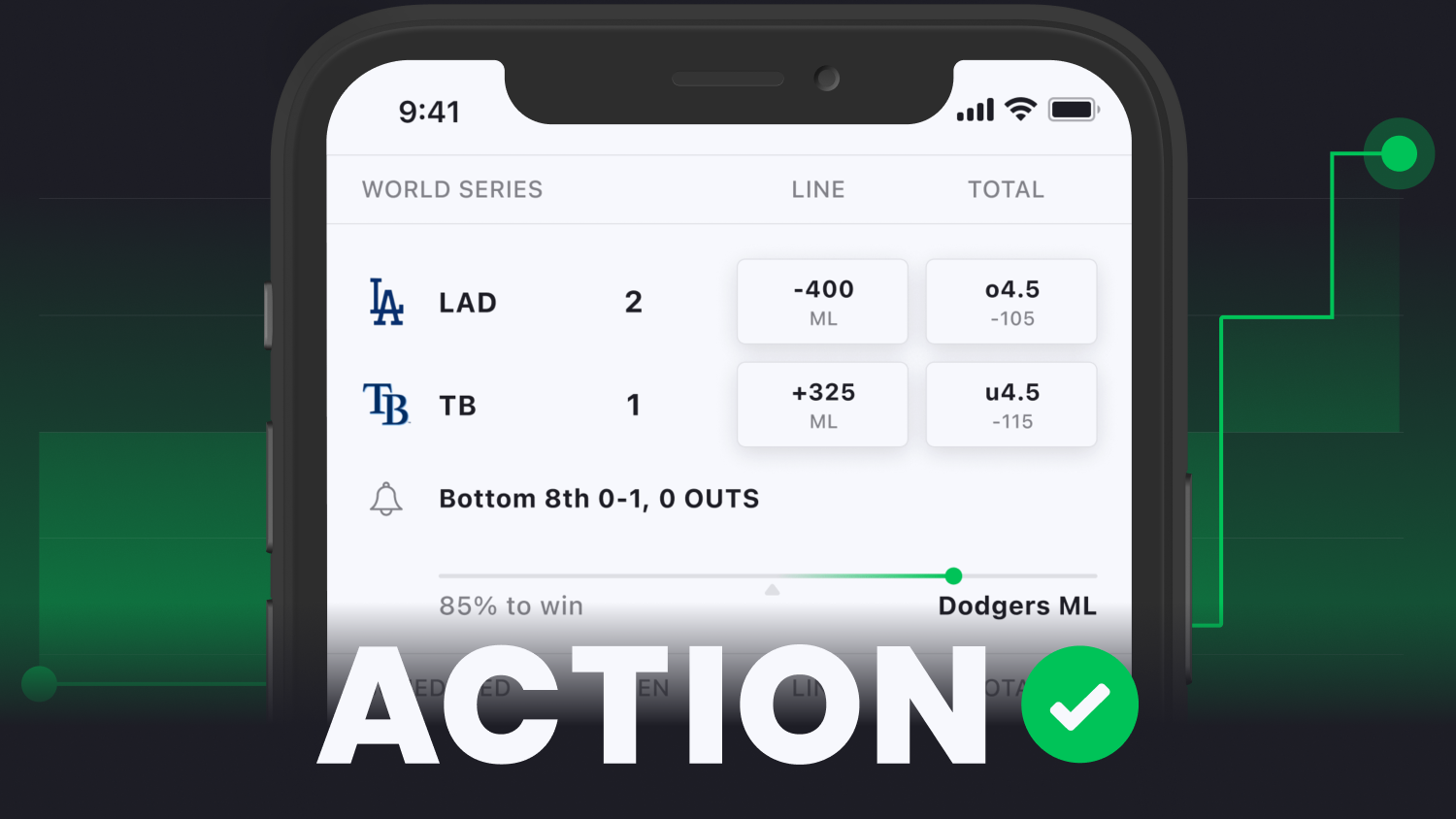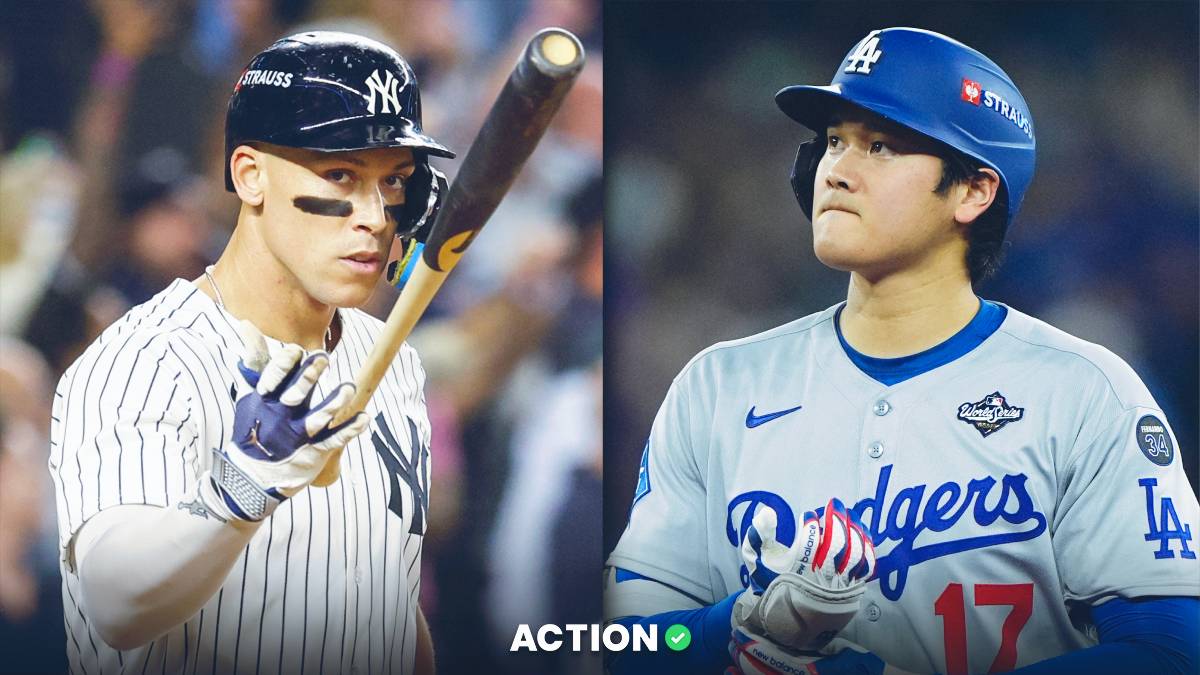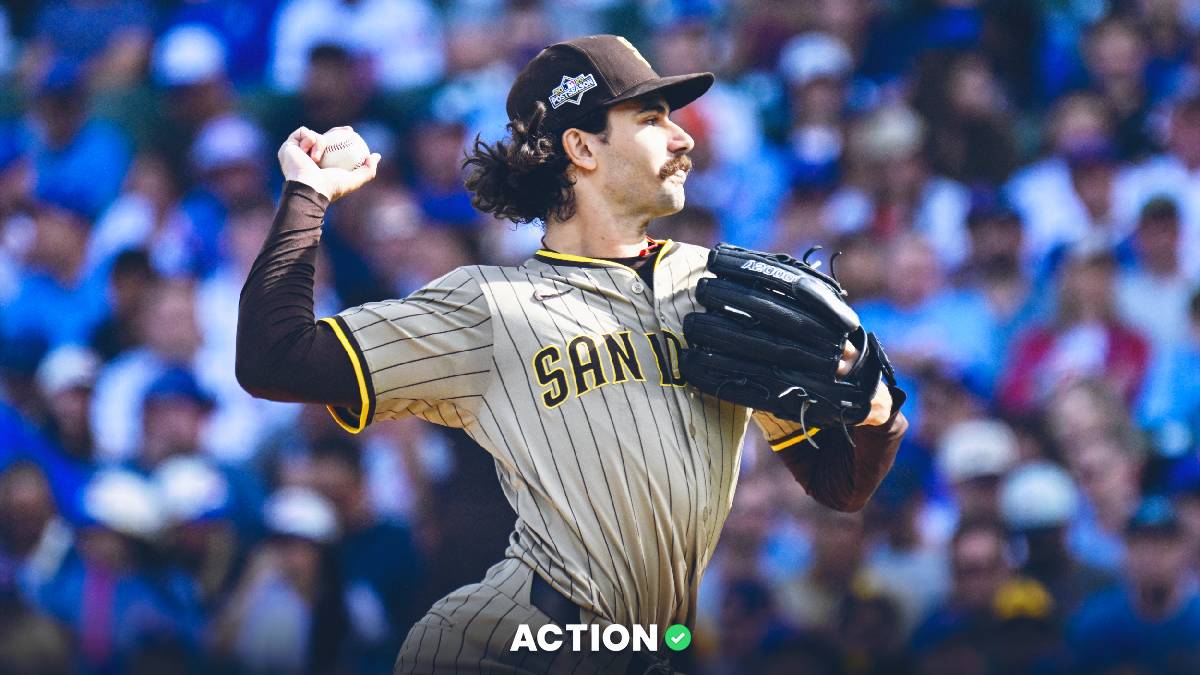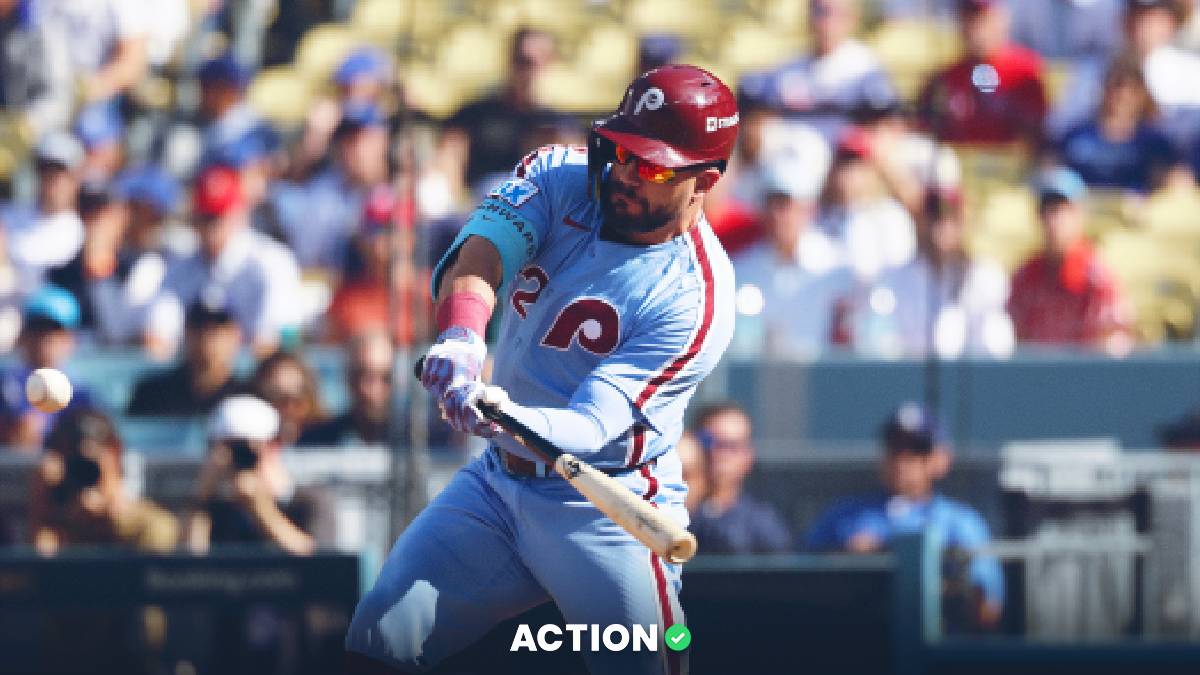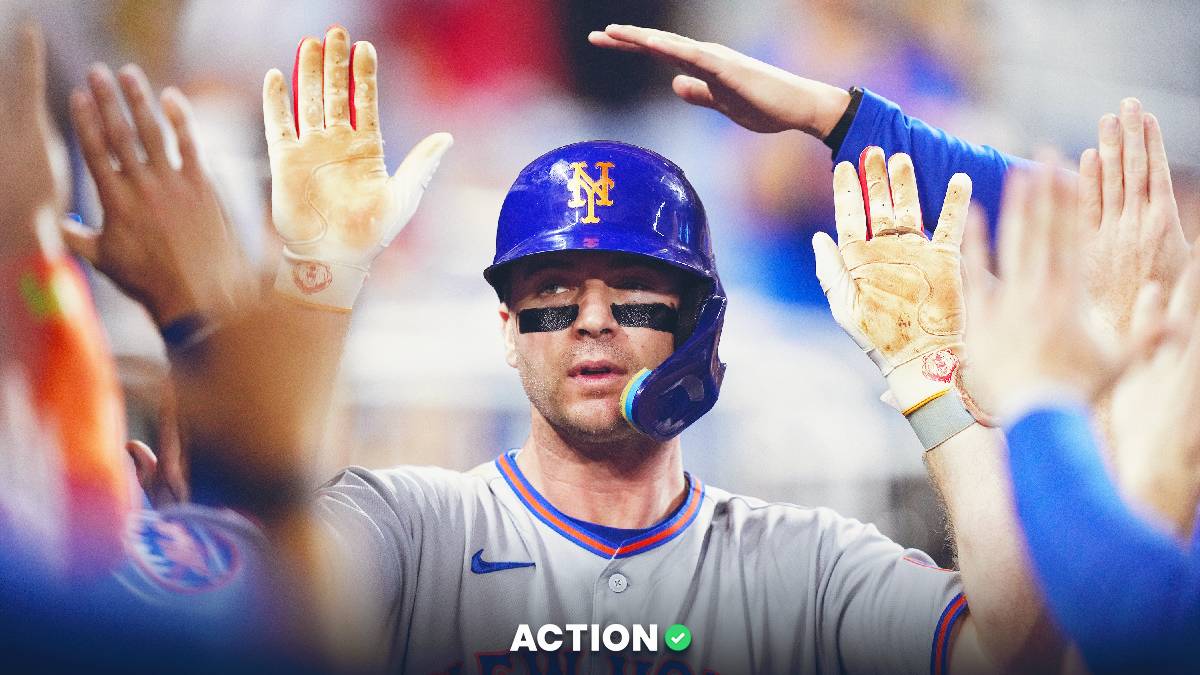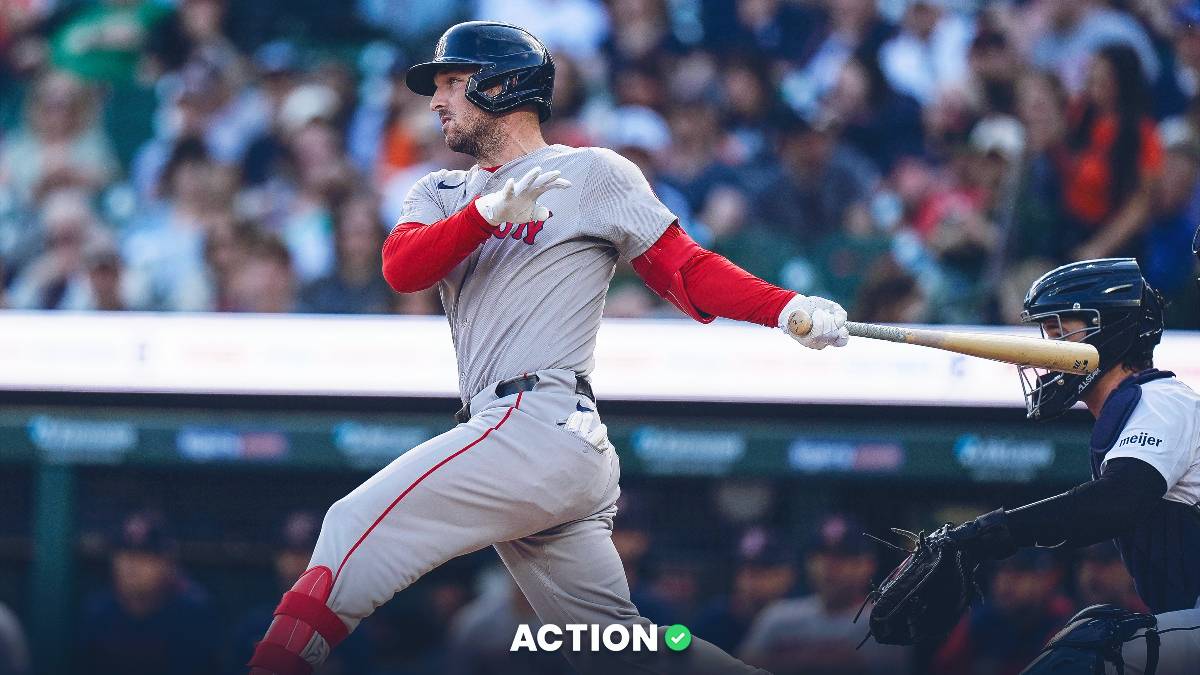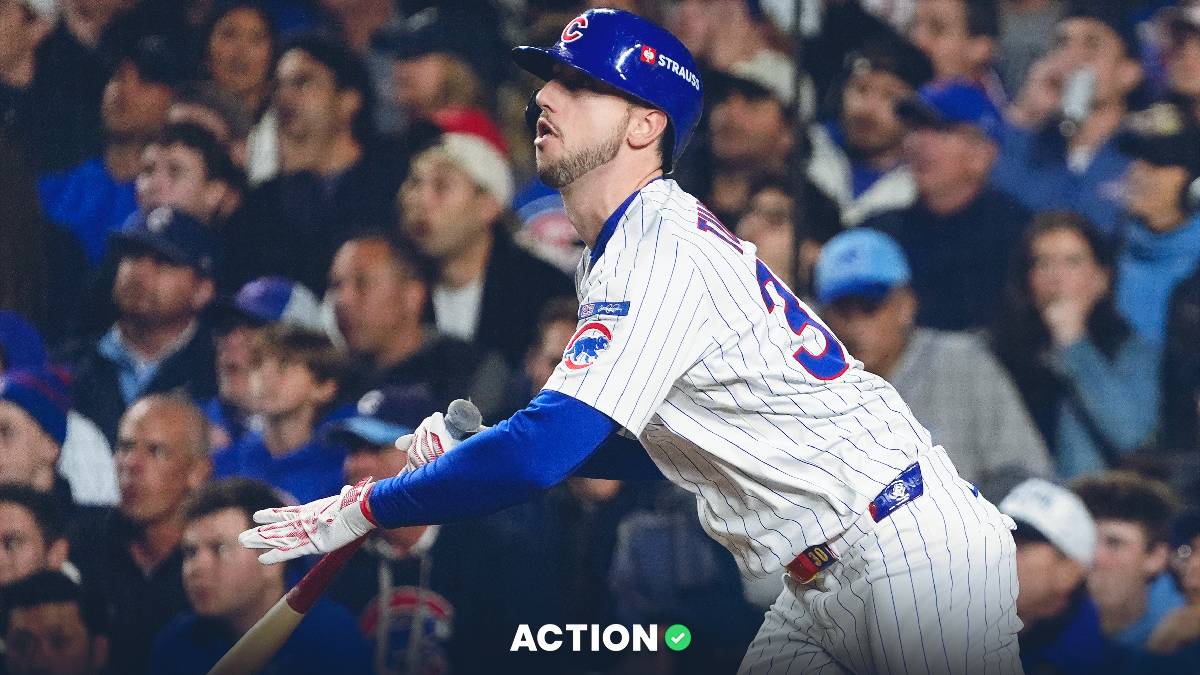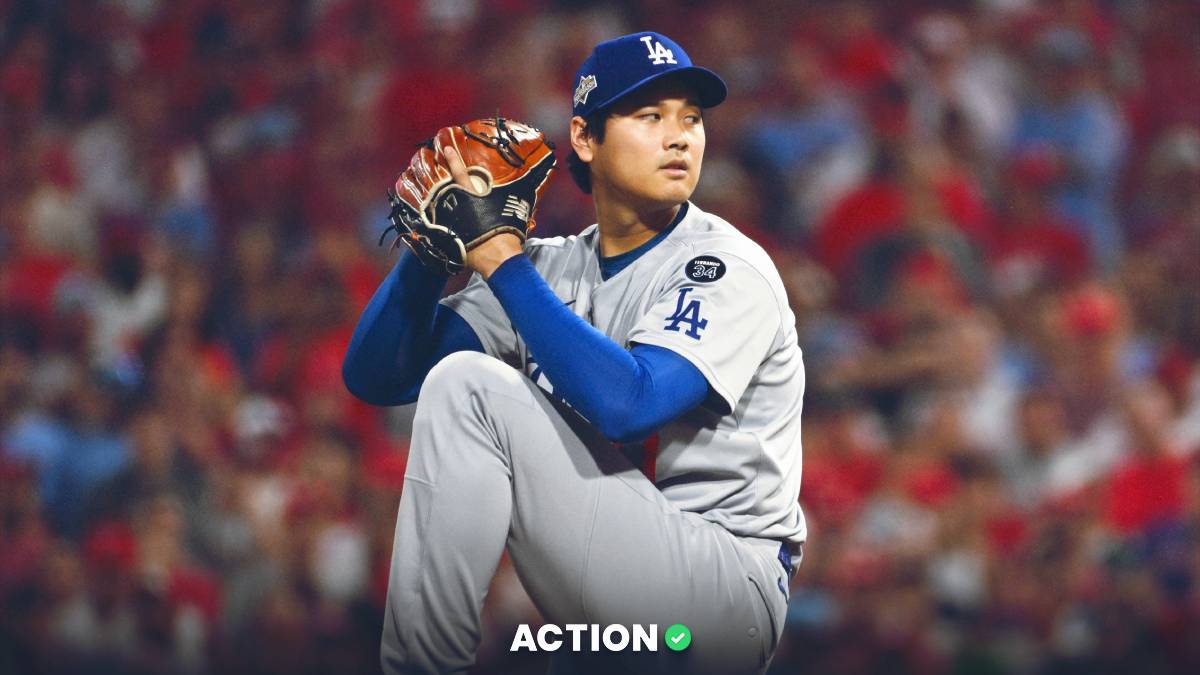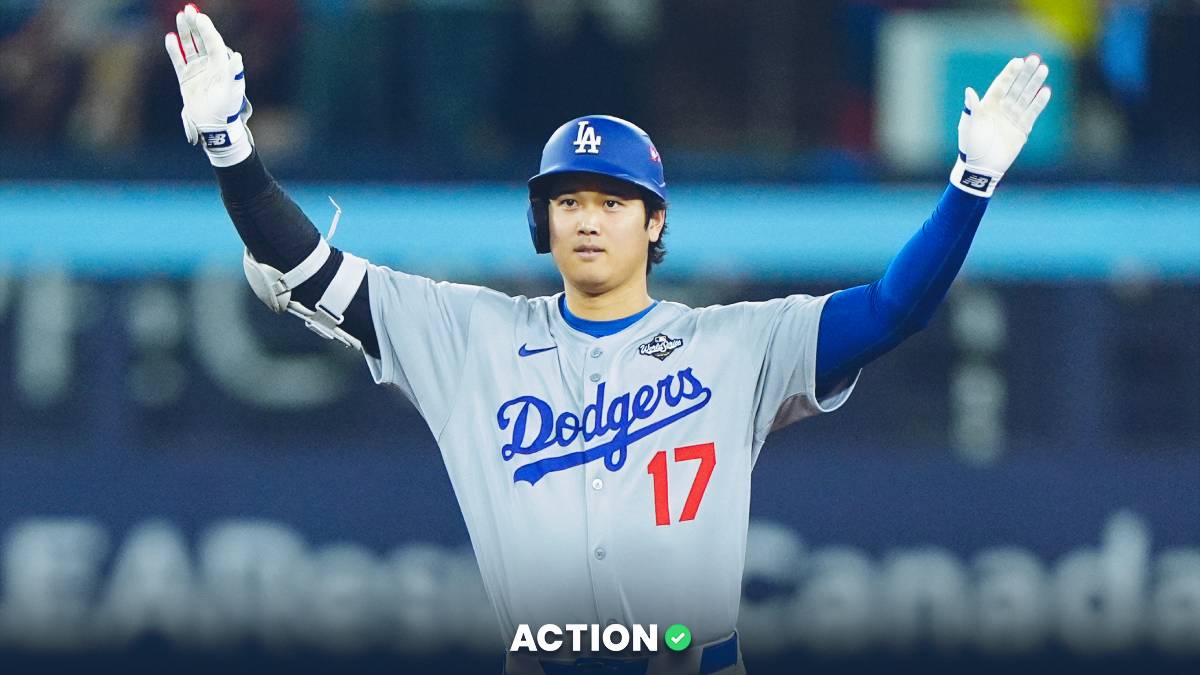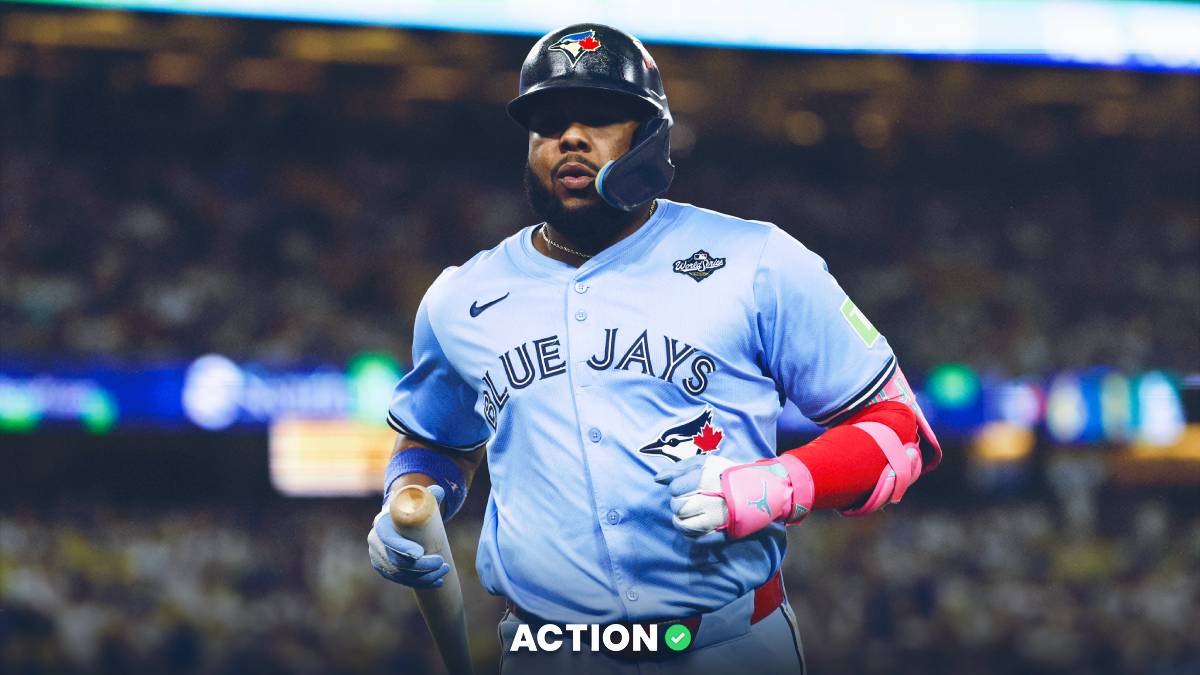- The Phillies are underdogs as they go for the sweep of the Mets in Queens.
- Kyle Gibson takes the mound for Philly and will be opposed by New York's Rich Hill.
- Continue reading for a full betting breakdown and prediction for Sunday Night Baseball.
Phillies vs. Mets Odds
| Phillies Odds | +100 |
| Mets Odds | -120 |
| Over/Under | 8.5 (-115/-115) |
| Time | 7:08 p.m. ET |
| TV | ESPN |
For the second consecutive week, the fledgling New York Mets will play host to Sunday Night Baseball. They are still searching for their first win after defeating the Yankees last Sunday and claiming the Mayor's Trophy in a dramatic fashion.
In the past six days, the Mets got swept at home by the Cardinals and have dropped the first two games in their current series against the Phillies, while decreasing their playoff chances to 1.6% per PECOTA and 0.5% per FanGraphs.
As a reminder: On August 1, the Mets held a 65-67% chance of making the playoffs between those two forecasts, but they are just 16-29 with a -21 run differential since, while allowing the Phillies (25-19) and Braves (24-17) to surge ahead in the standings:
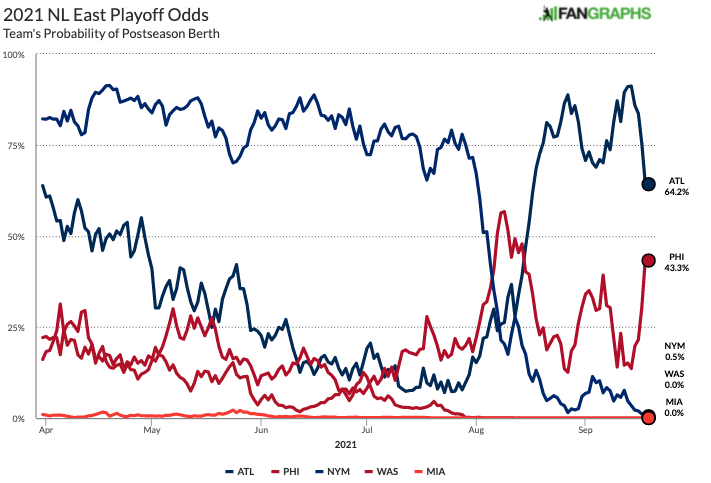
As of Sunday morning, the Phillies sit one game behind Atlanta for the NL East crown and are 2.5 games behind the Cardinals for the final playoff spot in the National League.
FanGraphs currently places their playoff odds at 43.3% (38.6% divisional odds). At the same time, PECOTA makes them the NL East favorite (57.3%) and thinks they are much more likely to make the playoffs (61.7%) than Atlanta (45.2%).
Below, I’ll preview both sides of this contest, provide my projections for the first five innings (F5) and the full game and offer my thoughts on the best ways to bet on this marquee matchup.
Philadelphia Phillies
The Phillies didn't make a big splash at the trade deadline, but they did improve their roster by acquiring Sunday's starter, Kyle Gibson, in addition to closer Ian Kennedy and infielder Freddy Galvis.
Gibson hasn't necessarily lived up to his first-round draft pedigree (No. 22 overall in 2018), but he has been a durable and serviceable innings-eater for the past eight seasons.
Since 2014 — Gibson's first full major league season — he ranks seventh in total innings pitched (1,268 1/3), behind Max Scherzer, Zack Greinke, Jon Lester, Gerrit Cole, Madison Bumgarner and Dallas Keuchel, and ahead of the likes of Trevor Bauer, Clayton Kershaw and Jacob deGrom.
This season has ranked among Gibson's best campaigns, with the righty posting a 3.86 xERA, 4.25 xFIP, and 4.54 SIERA. He added a cutter to his pitch mix (14.2%) in 2021, and all six of his offerings have returned a positive pitch value:
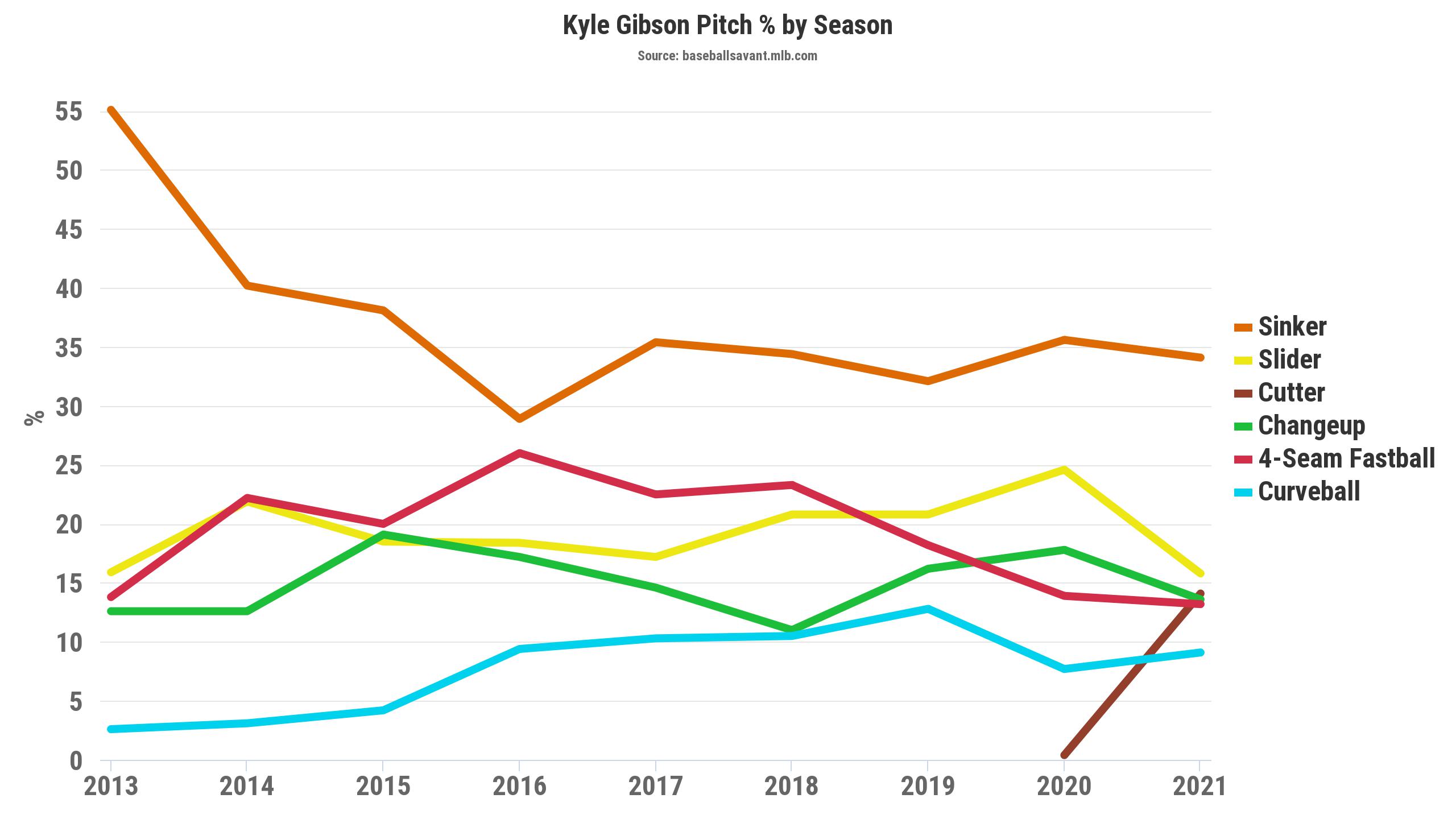
Gibson is primarily a sinker/slider pitcher against righties (combined 70.3% usage). Still, he mostly puts the slider away against lefties (9.3%) and uses a relatively balanced mix among his four-seam, sinker, changeup and cutter.
For his career, Gibson has better splits against righties (.311 wOBA) than lefties (.337 wOBA), and that has held in 2021 (.257 vs. righties, .320 vs. lefties). Still, he has improved his results slightly against lefty hitters, and his K-BB% has increased by about 4% of his career average.
Gibson's presence — and Ranger Suárez's emergence — has helped stabilize the middle of a Phillies rotation marred by poor depth and a struggling Matt Moore.
The Phillies' bullpen has been better since the trade deadline, too, ranking 18th in xFIP (4.37), eighth in SIERA (3.80), and sixth in K-BB% (16.3%). For reference, they ranked 12th, 21st, and 22nd by the same metrics through the end of July, after finishing as one of the worst bullpens in MLB history last season.
Bryce Harper has also been impossibly hot, leading MLB in WAR (4.5) since July 1, while surging to the lead (in my opinion) in the NL MVP race. Harper ranks second behind Vladimir Guerrero Jr. (6.7 WAR to 6.3 WAR) in total WAR for the season while playing 20 fewer games.
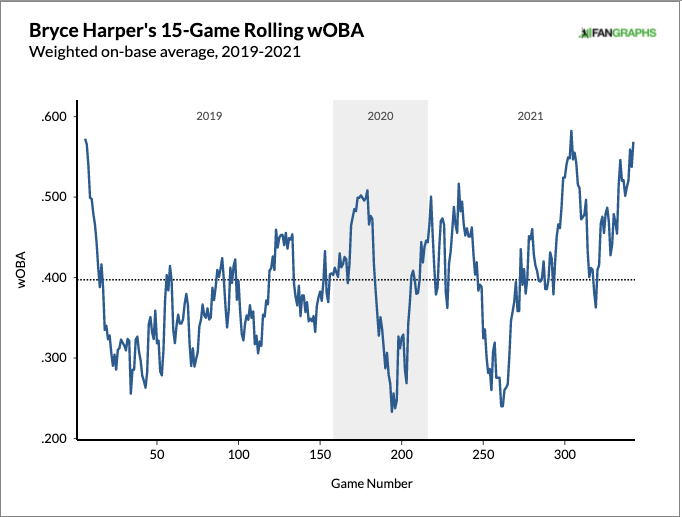
Offensively, the Phillies have been slightly better against lefties (102 WRC+, 12th) than they have against righties (94 wRC+, 18th), and they rank 15th in expected offense (.317 xwOBA), per Statcast.
Defense is the one area where you can knock them. The Phillies rank dead-last (-59) per Defensive Runs Saved and 26th (-16) per Outs Above Average.
Rhys Hoskins (-7 DRS) and Alec Bohm (-13) aren't currently on the roster, but Bryce Harper (-8) has given back some of his offensive contributions, and Didi Gregorius (-9) remains the Phillies' most significant liability; especially when you factor in his struggles offensively (73 wRC+).
New York Mets
The Mets will match Gibson with their trade-deadline acquisition by starting the 41-year-old Rich Hill (4.44 xERA, 4.67 xFIP, 4.43 SIERA).
Dick Mountain — as he is affectionately known — has seen a performance dip after posting five elite seasons from 2015-2019.
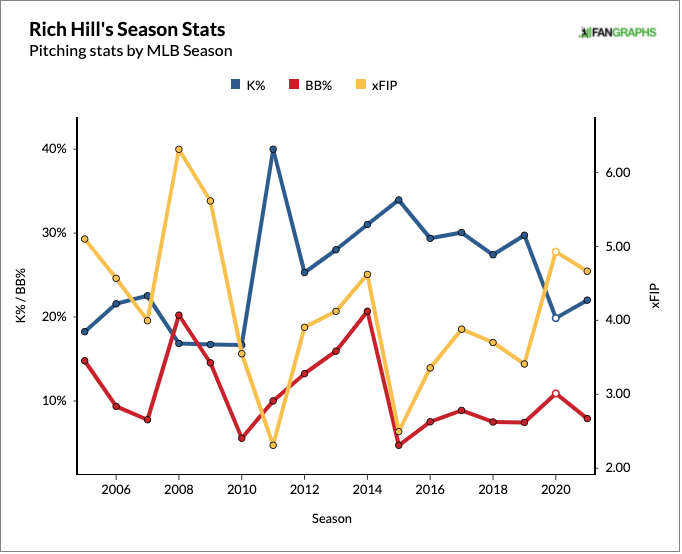
I do think that Hill has something left in the tank, however. He has been experimenting with a new curveball grip after working with teammate Seth Lugo (100th percentile in curveball spin). Even though he hasn't used it in a game yet (to my knowledge), Hill still has solid metrics on his two main offerings (70th percentile fastball spin, 80th percentile curveball spin).
Hill uses his four-seamer and curveball more than 90% of the time combined, but while the curveball remains effective, the fastball has returned a negative pitch value for the first time since 2014. Decreased pitch velocity is the likeliest explanation:
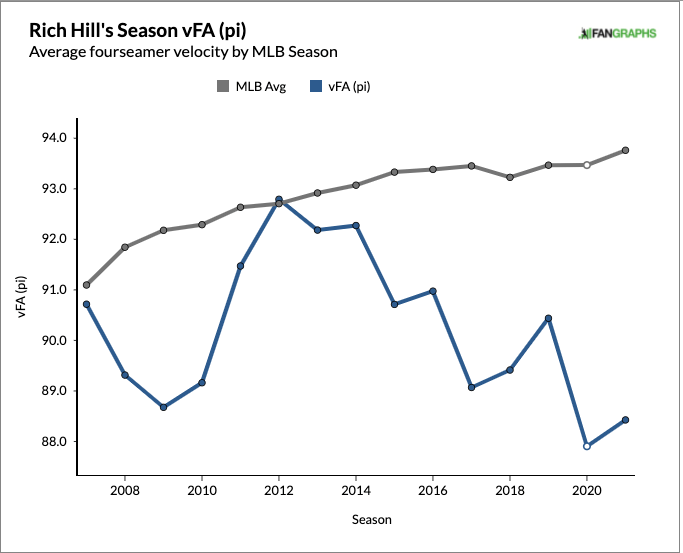
As I mentioned above, the Phillies hit lefties better than they do against righties, but they rate right around league average against fastballs and curveballs. And in a limited sample, their hitters are just 10-for-48 (.358 OPS) against Hill, so he still represents a bit of a different look for their offense.
The Mets' bullpen rates better than league average (4.20 xFIP, 12th; 3.86 SIERA, 8th; 15.6% K-BB%, 7th) on the season, though their relievers have struggled a bit in the second half (4.59 xFIP).
My model still likes the Mets' bullpen significantly better for Sunday (4.15 model weighted ERA) than it does the Phillies bullpen (4.89), which helps to drive the difference between the first five innings (F5) and full-game projections.
Their offense rates about average — with relatively neutral splits — for the season. They have been boosted by an above-average defense (45 DRS, ninth). Still, much of that value was accumulated with replacement players earlier in the season when expected starters were on the IL.
I still rate the Mets' defensive group slightly above average — and the Phillies' slightly below — but the actual difference in defensive expectation isn't as drastic as the season-long metrics (ninth vs. 30th) would suggest.
Phillies-Mets Projections and Pick
I projected New York as a slight favorite for the first five innings (F5) on Sunday, with a more significant bump for the full game, given my projected bullpen advantage for the Mets over the Phillies (4.15 to 4.89 model weighted ERA).
However, the odds for both the F5 and full game moneylines align with my projected odds, and I don't see betting value on either side of the moneyline or spread in either half.
Furthermore, the listed totals align with my projected totals.
This matchup features a neutral plate umpire in Chad Fairchild (career 219-218 to the Under), with neutral weather around Citi Field this evening, so neither variable factors into my projection.
One bet that does stand out to me is Kyle Gibson's strikeout total. I mentioned his inning-eating capabilities and the struggles in the Philadelphia bullpen, and the Phillies have seemingly let Gibson go deep into his starts.
Texas let Gibson face an average of 24.2 batters per game this season and 25.1 last year.
In eight starts with the Phillies, Gibson has faced an average of 27.8 batters per contest. The Mets rank 25th in MLB with a 23.5% strikeout rate against right-handed pitching, and Gibson owns a 19.4% K% on this season.
Given those data points, I project Gibson's strikeout rate at 20.6% in this contest, and if he faces 27 hitters, I project his strikeout total at 5.56.
SaberSim projects him for a 20.5% strikeout rate in this matchup against 25.6 batters, putting his total at 5.26.
Even though Gibson's total is juiced to the Over at 4.5, I like that bet up to 5 at -110 or better.
Pick: Kyle Gibson, Over 4.5 Strikeouts (bet to 5, -110)


